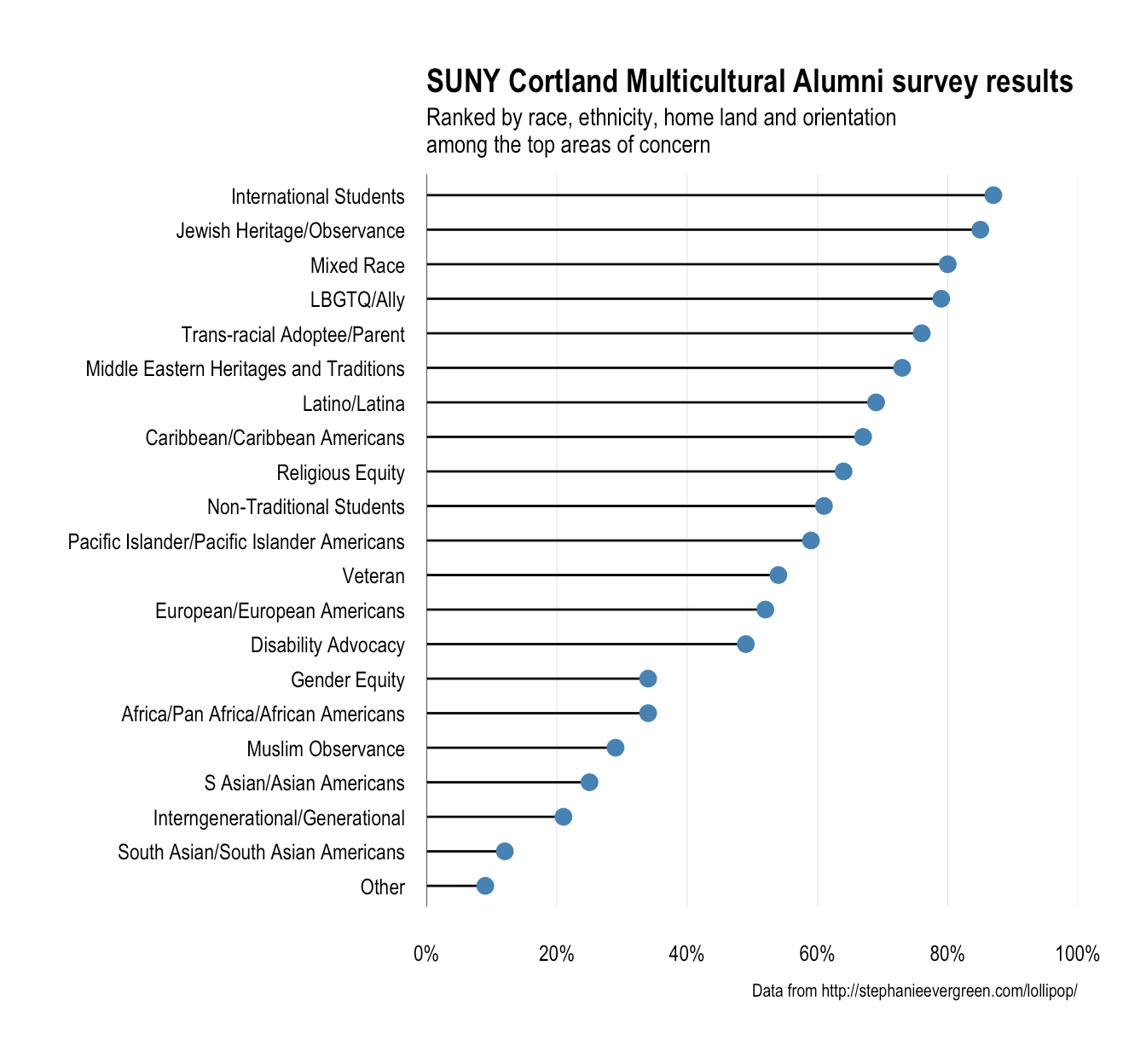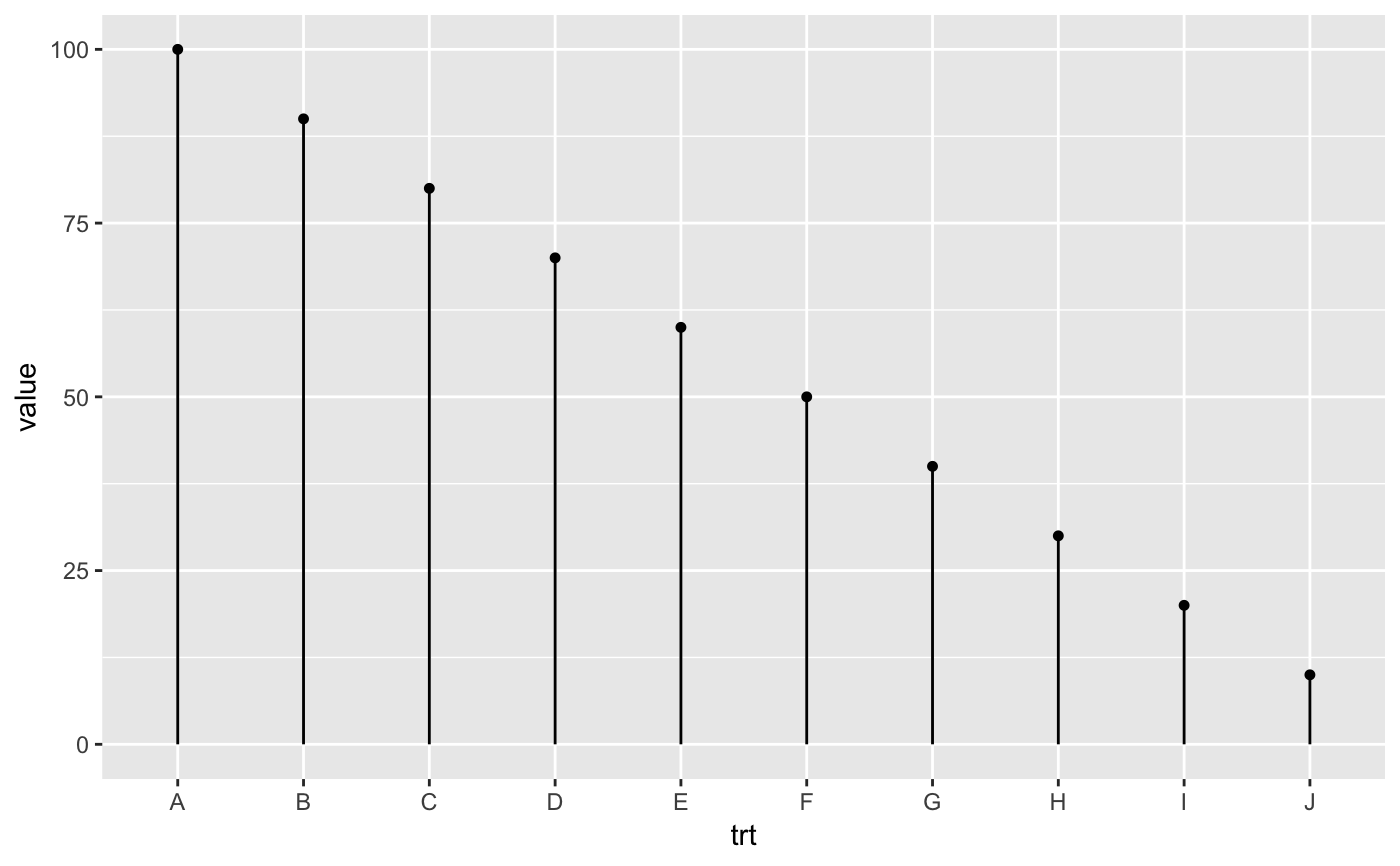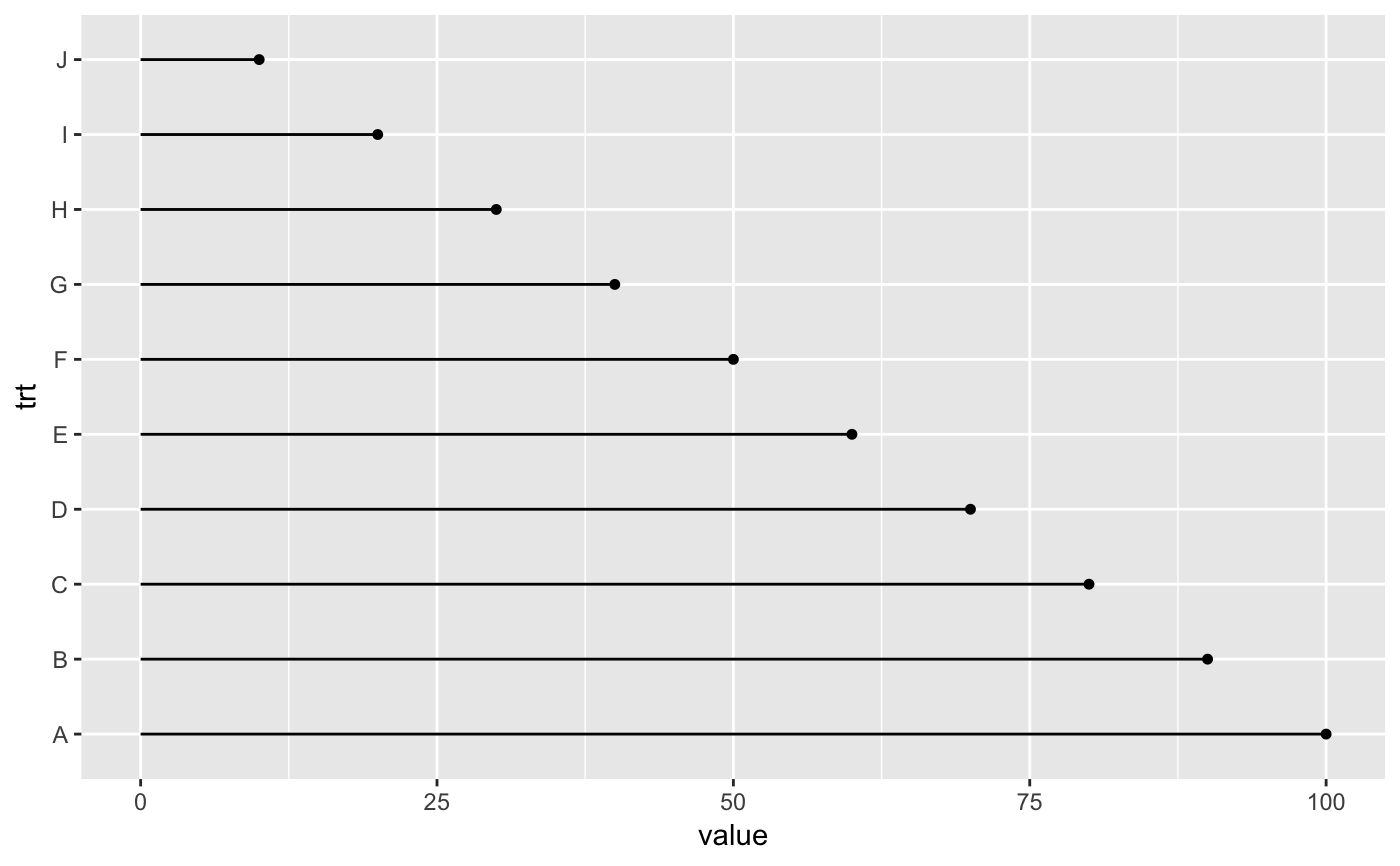The lollipop geom is used to create lollipop charts.
geom_lollipop(mapping = NULL, data = NULL, ..., horizontal = FALSE,
point.colour = NULL, point.size = NULL, na.rm = FALSE,
show.legend = NA, inherit.aes = TRUE)
Arguments
| mapping |
Set of aesthetic mappings created by aes() or
aes_(). If specified and inherit.aes = TRUE (the
default), it is combined with the default mapping at the top level of the
plot. You must supply mapping if there is no plot mapping. |
| data |
The data to be displayed in this layer. There are three
options:
If NULL, the default, the data is inherited from the plot
data as specified in the call to ggplot().
A data.frame, or other object, will override the plot
data. All objects will be fortified to produce a data frame. See
fortify() for which variables will be created.
A function will be called with a single argument,
the plot data. The return value must be a data.frame, and
will be used as the layer data. |
| ... |
other arguments passed on to layer. These are
often aesthetics, used to set an aesthetic to a fixed value, like
color = "red" or size = 3. They may also be parameters
to the paired geom/stat. |
| horizontal |
horizontal is FALSE (the default), the function
will draw the lollipops up from the X axis (i.e. it will set xend
to x & yend to 0). If TRUE, it wiill set
yend to y & xend to 0). Make sure you map the
x & y aesthetics accordingly. This parameter helps avoid
the need for coord_flip().
|
| point.colour |
the colour of the point |
| point.size |
the size of the point |
| na.rm |
If FALSE (the default), removes missing values with
a warning. If TRUE silently removes missing values. |
| show.legend |
logical. Should this layer be included in the legends?
NA, the default, includes if any aesthetics are mapped.
FALSE never includes, and TRUE always includes.
It can also be a named logical vector to finely select the aesthetics to
display. |
| inherit.aes |
If FALSE, overrides the default aesthetics,
rather than combining with them. This is most useful for helper functions
that define both data and aesthetics and shouldn't inherit behaviour from
the default plot specification, e.g. borders(). |
Details
Lollipop charts are the creation of Andy Cotgreave going back to 2011. They
are a combination of a thin segment, starting at with a dot at the top and are a
suitable alternative to or replacement for bar charts.
Use the horizontal parameter to abate the need for coord_flip()
(see the Arguments section for details).
A sample of the output from geom_lollipop():

Aesthetics
@section Aesthetics:
geom_point() understands the following aesthetics (required aesthetics are in bold):
x
y
alpha
colour
fill
group
shape
size
stroke
Learn more about setting these aesthetics in
vignette("ggplot2-specs").
Examples
df <- data.frame(trt=LETTERS[1:10],
value=seq(100, 10, by=-10))
ggplot(df, aes(trt, value)) + geom_lollipop()
ggplot(df, aes(value, trt)) + geom_lollipop(horizontal=TRUE)


